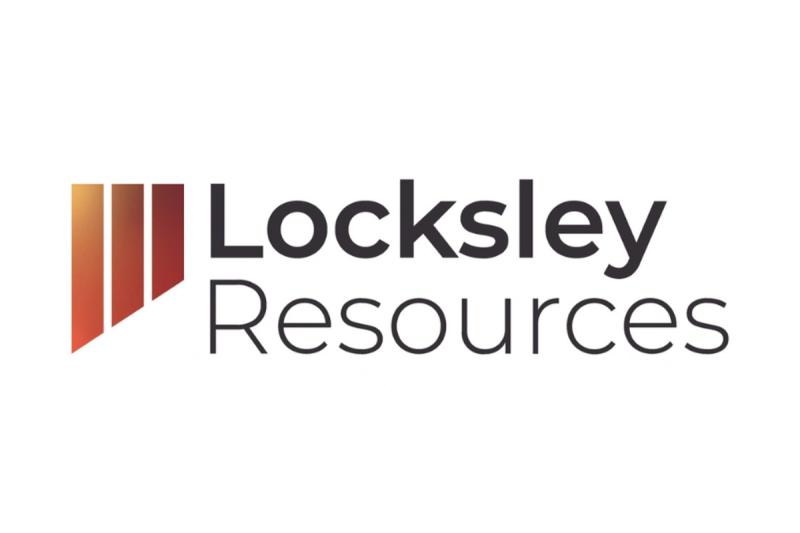Investor Insight
Heliostar offers a rare combination of immediate cash flow from two producing mines and a significant growth story driven by the high-grade Ana Paula development project. This blend of near-term production, strong margins and a robust pipeline positions the company as a compelling emerging mid-tier gold producer.
Overview
Heliostar Metals (TSXV:HSTR,OTCQX:HSTXF,FRA:RGG1) is an emerging mid-tier gold producer focused on unlocking high-grade gold production in Mexico’s premier mining regions.
The company rapidly expanded its asset base by acquiring a diverse portfolio of producing and development-stage assets. This positions it for long-term, scalable production growth supported by both high-grade underground and large open-pit heap-leach operations.
Heliostar now holds two producing mines – La Colorada and San Agustin, with combined production of 30,000 to 40,000 oz of gold – and is advancing the development of its flagship Ana Paula project. Two additional development assets in Mexico, Cerro del Gallo and San Antonio, in addition to exploration projects in North Sonora and Unga in Alaska complete Heliostar’s portfolio. This diversified platform enables the company to fund development through operating cash flow while continuing to expand its resource base.
Heliostar prioritizes capital discipline and low-cost acquisitions, significantly expanding its asset base while maintaining a lean financial structure. With a growing operating cash flow, the company is reducing reliance on equity financing for development.
The company is positioned for strong year-over-year production growth as San Agustin restarts in Q4 2025, La Colorada executes its updated 2025 mine plan, and Ana Paula advances toward construction and expected first production in 2028, following a positive underground PEA in November 2025 and an ongoing feasibility study. These milestones support the company’s strategy of building a multi-asset production base with increasing scale and margins.
Looking ahead, the company has a long-term vision of achieving 500,000 ounces of gold production annually by 2030. This growth will be driven by the development of Ana Paula, followed by Cerro del Gallo and San Antonio, with continued exploration success and strategic acquisitions supplementing organic growth.
Company Highlights
- Heliostar Metals is rapidly advancing from a junior explorer to a mid-tier gold producer, targeting 150,000 oz per year in the near term and 500,000 oz annually by 2030.
- Heliostar has rapidly expanded its portfolio with key acquisitions, now controlling two producing mines and three advanced-stage growth assets in Mexico. Added 3.5 million measured and indicated gold ounces for just US$15 million, reinforcing a capital-efficient growth model.
- The company prioritizes capital discipline and low-cost acquisitions to expand its asset base and maintain a lean financial structure. Unlike many juniors that rely on dilution to grow, Heliostar leverages gold production cash flows to drive project development.
- Annual gold production at La Colorada and San Agustin mines as of 2025 is between 30,000 to 40,000 oz, with mine operations earning $14.2 million in Q3 2025. Cash flow from these two mines funds Heliostar’s exploration and development without significant dilution.
- CEO Charles Funk leads a seasoned team of mine builders and exploration experts with a track record of developing world-class deposits.
- The company also features a favorable shareholder registry: 53 percent institutional investors, 42 percent high-net-worth and retail investors, and 5 percent held by the board and management.
Key Projects
Ana Paula (Flagship Development Project)
Ana Paula is Heliostar’s flagship high-grade underground gold project located in the Guerrero Gold Belt, one of Mexico’s most prolific precious metals regions.
The November 2025 underground PEA confirms Ana Paula as a low-cost, high-margin development opportunity with a nine-year mine life producing approximately 875,000 ounces of gold, averaging roughly 101,000 ounces per year after ramp-up. The project benefits from a wide, high-grade panel that continues to demonstrate strong continuity and exceptional grades, supported by a mineral resource of 710,920 ounces of measured and indicated gold at 6.6 grams per ton (g/t) and 447,500 ounces of inferred gold at 4.24 g/t.
Heliostar has transitioned the project to an underground-only development plan to enhance economics, minimize surface disturbance and reduce capital intensity. The company is advancing engineering and permitting programs, including a permit amendment to convert the existing open-pit approval into an underground operation. A recently expanded 20,000-metre drill program is underway to upgrade inferred resources, expand the mineral envelope and support the ongoing feasibility study. Recent results included 83.2m grading 17.35 g/t gold from 76.0 m and 70.7 m grading 9.38 g/t gold from 49.65 m.
Heliostar intends to advance the existing decline in 2026 to access underground drilling platforms and complete bulk sampling, enabling a construction decision shortly thereafter and positioning the project for first production in 2028. Ana Paula is expected to become the cornerstone asset underpinning Heliostar’s long-term production growth.
La Colorada Mine
La Colorada, located in Sonora, Mexico, is a fully operating open-pit heap-leach mine that underwent a major turnaround in early 2025. Mining was restarted in January 2025, and an updated October 2025 technical report outlines a significantly strengthened operation with a 6.1-year mine life and total production of 286,000 ounces of gold. The mine is expected to produce between 17,500 and 23,800 gold-equivalent ounces in 2025 at competitive cash costs and all-in sustaining costs, benefiting from strong gold prices and improved operational performance.
La Colorada has meaningful opportunities for growth through drilling of the Veta Madre Plus area, which could add up to 28,000 ounces of additional near-surface resource, and the evaluation of the underground potential at El Creston, where deeper drilling has returned high-grade gold and silver intercepts. Further optimization of low-grade stockpiles also offers a route to additional production with minimal capital requirements. With its expanded reserves, improving margins and active exploration pipeline, La Colorada remains a key cash-flow generator and a vital contributor to Heliostar’s self-funded growth strategy.
San Agustin Mine
San Agustin is a heap-leach gold mine in Durango, Mexico, that produced approximately 14,700 ounces of gold in 2024 and continues to generate cash flow through stockpile processing in 2025. The mine is scheduled to restart active mining in the fourth quarter of 2025 following approval of the Corner Permit Area, with the restart plan outlining roughly 44,500 ounces of total gold production over a 1.2-year mine life. The restart requires just US$4.2 million in initial capital, funded entirely from Heliostar’s balance sheet, and delivers strong economics with significant leverage to higher gold prices. Beyond the restart, San Agustin provides meaningful growth potential through near-surface oxide expansion and deeper sulfide and breccia targets, where drilling has identified encouraging mineralization.
Cerro del Gallo Project
Cerro del Gallo is a large-scale, gold-silver development project in the Guanajuato district with 2.86 Moz of measured and indicated gold resources and an additional 1 Moz inferred. The project is advancing through permitting and a pre-feasibility study expected in Q4 2025, which is evaluating a long-life heap-leach operation targeting 80,000 to 100,000 ounces of annual gold production. With its scale, simple metallurgy and strong development profile, Cerro del Gallo represents a cornerstone growth asset supporting Heliostar’s strategy to expand production later this decade
San Antonio Project
San Antonio is an open-pit heap-leach development project in Baja California Sur hosting 1.74 million ounces of measured and indicated gold resources. A January 2025 PEA outlines robust economics, including 1.1 Moz of total production over 13 years, low AISC and an after-tax NPV5 of US$715 million at US$2,600 gold. The project is progressing through additional studies and environmental permitting and provides significant medium-term growth potential within Heliostar’s pipeline.
Unga Project
The Unga project in Alaska is a high-grade gold exploration asset, with an inferred resource of 384,000 oz gold (13.8 g/t). While not a primary focus, the project remains a long-term high-grade growth opportunity.
Management Team
Charles Funk – President & CEO
Charles Funk brings over 18 years of experience in business development and exploration. Before joining Heliostar, he held senior roles at Newcrest Mining and OZ Minerals, two of the world’s most prominent mining companies. Funk led the Panuco discovery for Vizsla Silver in 2020, demonstrating his strong expertise in identifying and advancing high-potential gold and silver deposits. Under his leadership, Heliostar has pursued transformational acquisitions that have rapidly expanded the company’s asset base while maintaining capital efficiency.
Gregg Bush – Chief Operating Officer
A highly regarded mine builder, Gregg Bush has a strong track record in mine development, project integration, and operations management. He previously served as COO of Capstone Mining for nine years and as SVP of Mexico for Equinox Gold. With deep experience in Latin American mining operations, Bush plays a pivotal role in advancing Heliostar’s production assets, optimizing operations and ensuring efficient project execution.
Sam Anderson – VP Projects
Sam Anderson brings 20 years of experience in mine geology and project management, including 17 years at Newmont, where he served as mine geology superintendent and senior manager of exploration business development. He played a significant role in the development of Newmont’s Merian Mine in Suriname, from resource stage to steady-state operation. His expertise in mineral resource expansion and project evaluation is crucial to advancing Ana Paula and Cerro del Gallo toward production.
Mike Gingles – VP of Corporate Development
With over 35 years of corporate and entrepreneurial experience in the mining industry, Mike Gingles has been a key player in major mining deals. He led the Pueblo Viejo and Turquoise Ridge transactions for Placer Dome, two of the largest gold assets in North America. His expertise in strategic partnerships, corporate finance, and project acquisitions has positioned Heliostar for transformational growth.
Hernan Dorado – VP Sustainability & Special Projects
As a fifth-generation miner, Hernan Dorado has more than 20 years of experience in the mining sector, including a founding role at Guanajuato Silver, where he served as COO. He has extensive experience in Mexican mining operations, permitting and sustainability practices, ensuring that Heliostar’s projects meet the highest environmental and social responsibility standards.
Vitalina Lyssoun – Chief Financial Officer
Vitalina Lyssoun is a chartered professional accountant (CPA, CA) with over 16 years of financial expertise with a focus on the resource sector. She has strengths in Canadian and US public company reporting, regulatory and tax compliance, and internal controls. She is fluent in Spanish and has experience in operations based in Mexico, Central America and West Africa. Most recently, Lyssoun built and led the corporate accounting team at Gatos Silver, including through their recent merger with First Majestic Silver.
Stephen Soock – VP Investor Relations & Development
Stephen Soock has been in the mining industry for almost 20 years in both technical and capital markets roles. He has worked in various technical roles at mine sites across Canada, including Vale’s Thompson Nickel operation, Mosaic’s Belle Plaine solution potash mine and Rio Tinto’s Diavik Diamond mine complex. Prior to joining Heliostar, Stephen spent eight years as a sell-side research analyst covering growth and development companies in the junior precious metals space. He graduated from Queen’s University with a B.Sc. in Mining Engineering, is a CFA Charterholder, and a Brendan Woods ranked analyst.










